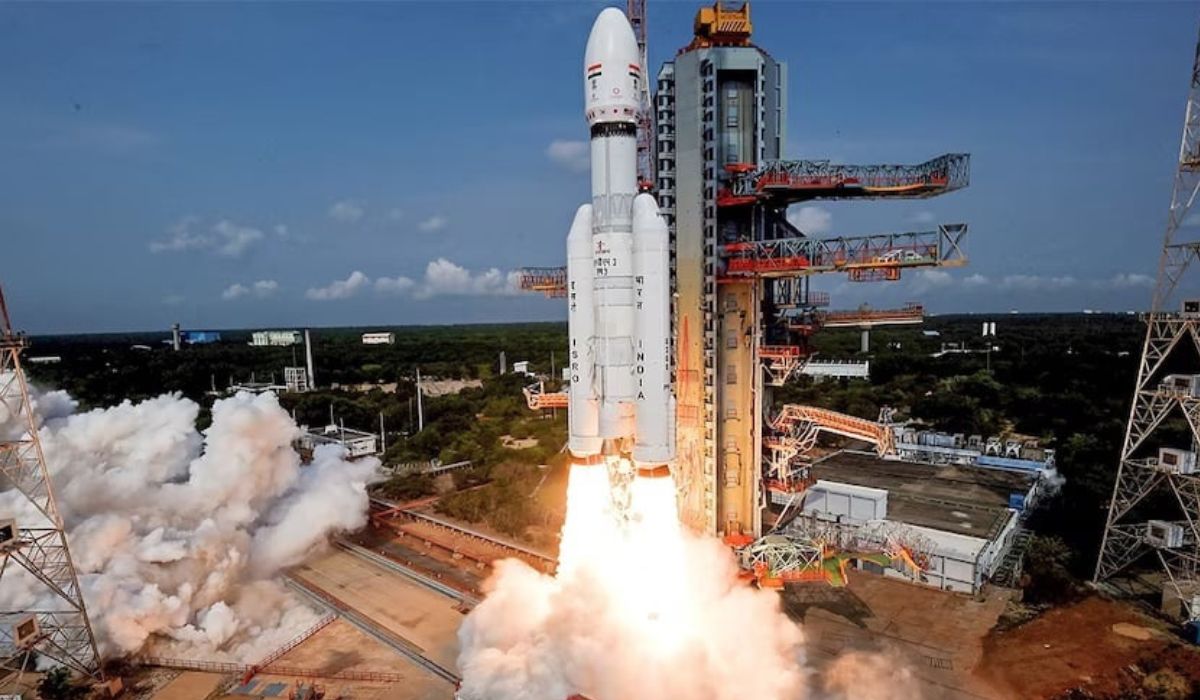Scientists and space aficionados have long been enchanted by the Moon’s place in the vastness of space. India has played a significant role in the search for answers about our cosmic neighbour because of its long history of space exploration. The Indian Space Research Organisation (ISRO) is preparing for Chandrayaan-3, its third lunar mission, after the successful Chandrayaan-1 and Chandrayaan-2.
Genesis of Chandrayaan-3
The foundation of Chandrayaan-3 is the knowledge and achievements of its forerunners. The 2008 launch of Chandrayaan-1, India’s first lunar mission, confirmed the presence of water molecules on the lunar surface and produced other noteworthy discoveries. Chandrayaan-2, which sought to investigate the area around the lunar south pole, was launched in 2019 to build on this success. The goal for a more extensive lunar exploration is fuelled by the orbiter’s continued useful data transmission, even though the lander Vikram encountered obstacles during its descent.
Objectives and Scientific Endeavors
There are several scientific goals that Chandrayaan-3 is well-positioned to accomplish. Its principal objective is to improve our knowledge of Earth’s nearest celestial neighbour by sending a lander and rover to explore the lunar surface. We can learn more about the Moon’s geological history thanks to the rover’s sophisticated instruments, which will examine soil and rock samples. Water molecules are an essential resource for future lunar missions, and Chandrayaan-3 intends to keep looking for them.
Technical Advancements
Chandrayaan-3 is unique among spacecraft since it uses new technology and improves upon existing ones, drawing on knowledge and experience from earlier missions. In order to avoid the same problems that the Vikram lander had during Chandrayaan-2, the lander and rover will presumably have better navigation and landing systems. This is a major achievement for India’s lunar exploration programme, since ISRO has worked tirelessly to refine these technologies to guarantee a flawless soft landing.
International Collaboration
As a symbol of India’s dedication to global cooperation in space research, Chandrayaan-3 is more than just a domestic project. Sharing knowledge, assets, and scientific data has been an ongoing focus for ISRO as it collaborates with other space agencies and organisations. By working together, we can further deepen the ties that bind nations via space exploration and encourage more international collaboration in the quest for scientific understanding.
Timeline and Launch Details
Based on the most recent information, the Chandrayaan-3 mission is being worked on by ISRO with great zeal. The spacecraft will enter lunar orbit on the back of the launch vehicle, which is expected to be a GSLV Mk III. From there, it will execute a sequence of manoeuvres before gently touching down on the lunar surface. Everyone in the space community is waiting with bated breath for the launch of Chandrayaan-3, which will add another major chapter to India’s history of space exploration.
Economic and Scientific Impact
The economic and technological ramifications of the Chandrayaan-3 mission are just as significant as those of the scientific ones. Inspiring innovation and the development of a trained workforce, this aim could propel India’s space industry forward. In addition, the scientific community worldwide will benefit greatly from the data contributed by Chandrayaan-3’s findings, which will enhance our knowledge of the lunar atmosphere and geology.
Future Prospects and Lunar Exploration Vision
India has loftier goals for lunar exploration, and Chandrayaan-3 is a baby step in that direction. Manned lunar landings are among ISRO’s future plans, which would show India’s space exploration expertise and determination to break new ground. Not only would Chandrayaan-3’s achievement increase India’s prestige in the international space arena, but it will also encourage the youth of today and tomorrow to pursue careers in STEM fields and space exploration.
Conclusion
Chandrayaan-3 threads together the hopes, dreams, and successes of India’s space programme, making it an important part of the larger fabric of space exploration. The entire world will be glued to their screens as the mission progresses, waiting to see if this lunar journey is successful and what new discoveries it uncovers about the Moon and the universe. Beyond its physical form, Chandrayaan-3 embodies the indefatigable human desire to discover more about the universe and its boundless mysteries.
Also Read: Revolutionizing Space Travel: SpaceX Starship Launch.
FAQs
What is Chandrayaan-3?
The third and last lunar mission of India, after the successful Chandrayaan-1 and Chandrayaan-2, is scheduled to launch in the near future. In order to do scientific research on the moon, it plans to send a lander and a rover there.
What are the goals of Chandrayaan-3?
Among Chandrayaan-3’s main goals are the continuation of the hunt for water molecules, the analysis of soil and rock samples, and the performance of scientific experiments on the lunar surface. In doing so, it hopes to expand upon the findings of those that came before it.
Compare and contrast Chandrayaan-2 with Chandrayaan-3?
Chandrayaan-3 centres on a lander and rover, in contrast to Chandrayaan-2, which featured an orbiter, lander (Vikram), and rover (Pragyan). Using what was learnt on the Chandrayaan-2 mission, this mission integrates new technology to enhance landing systems and navigation.
What kinds of scientific equipment will be on board the Chandrayaan-3?
In order to analyse soil and rock samples from the moon, the Chandrayaan-3 rover is anticipated to have sophisticated instrumentation. Closer to the launch, we will reveal the precise specifications of the instruments.











